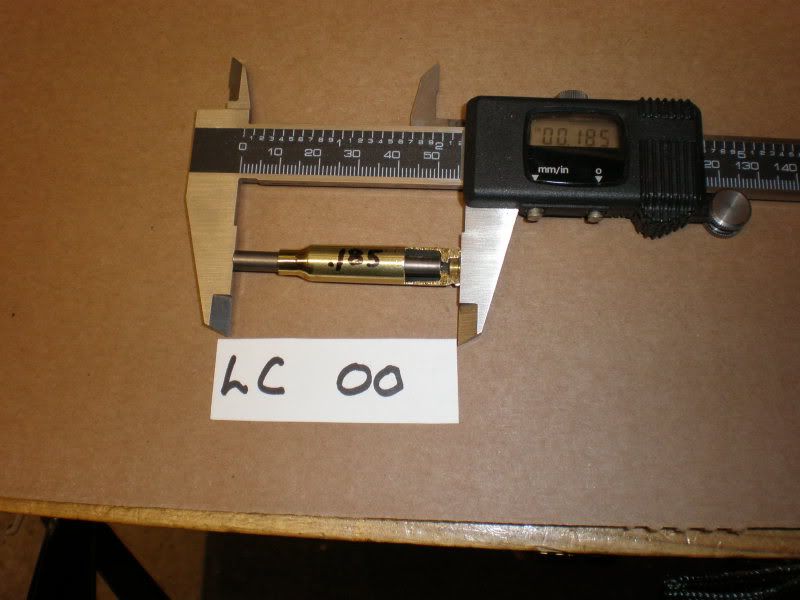Gary L. Griffiths
New member
I've been using a Lee case trimmer to trim my .223 and .308 cases. The Lee works by having a cutter with different size/length mandrels with pins to fit in the flash holes of your cases. Although it has a collet that fits the case head so you can chuck it into a drill, I find it easier to use just by grasping the case firmly and twisting the cutting head.
I recently did some correlating case weight, capacity, and length, finding all of my trimmed commercial cases well within tolerance. Results were: Federal Avg 1.7497 SD 0.0055; PMC Bronze Avg 1.7554 SD 0.0023; PPU Match Avg 1.7540 SD 0.0031; and PMC X-Tac Avg 1.7540 SD 0.0022. I then checked some unfired Lake City cases, which averaged 1.7538 with a SD of 0.0007.
This morning it occurred to me I was somewhat comparing apples with oranges; fired resized cases to unfired. I sized, trimmed and primed a like sample of Lake City cases that were twice-fired. Unsurprisingly, the cases held an average of 30.84 grs BLC(2) as opposed to 30.16 for the unfired cases. What rather shocked me, was that the trimmed cases averaged 1.7661 in length with a SD of 0.0048. The longest was 1.7735, with the shortest being 1.7590. I double-checked to see that the mandrel was solidly attached to the cutter head, which it was. Apparently the difference in case length is due to the fact that Lake City brass is about 0.01" thicker in the case head.
Since I recently ran into trouble (very high pressure indicated by velocity of 3448 fps & blown primer)

 apparently due to cases being over-length (Hot case was 1.7730") do I need to be concerned about using this trimmer on military cases? Specs call for case length of 1.75", not to exceed 1.76". Should I get another mandrel and trim off 0.02"?
apparently due to cases being over-length (Hot case was 1.7730") do I need to be concerned about using this trimmer on military cases? Specs call for case length of 1.75", not to exceed 1.76". Should I get another mandrel and trim off 0.02"? 
I recently did some correlating case weight, capacity, and length, finding all of my trimmed commercial cases well within tolerance. Results were: Federal Avg 1.7497 SD 0.0055; PMC Bronze Avg 1.7554 SD 0.0023; PPU Match Avg 1.7540 SD 0.0031; and PMC X-Tac Avg 1.7540 SD 0.0022. I then checked some unfired Lake City cases, which averaged 1.7538 with a SD of 0.0007.
This morning it occurred to me I was somewhat comparing apples with oranges; fired resized cases to unfired. I sized, trimmed and primed a like sample of Lake City cases that were twice-fired. Unsurprisingly, the cases held an average of 30.84 grs BLC(2) as opposed to 30.16 for the unfired cases. What rather shocked me, was that the trimmed cases averaged 1.7661 in length with a SD of 0.0048. The longest was 1.7735, with the shortest being 1.7590. I double-checked to see that the mandrel was solidly attached to the cutter head, which it was. Apparently the difference in case length is due to the fact that Lake City brass is about 0.01" thicker in the case head.
Since I recently ran into trouble (very high pressure indicated by velocity of 3448 fps & blown primer)




